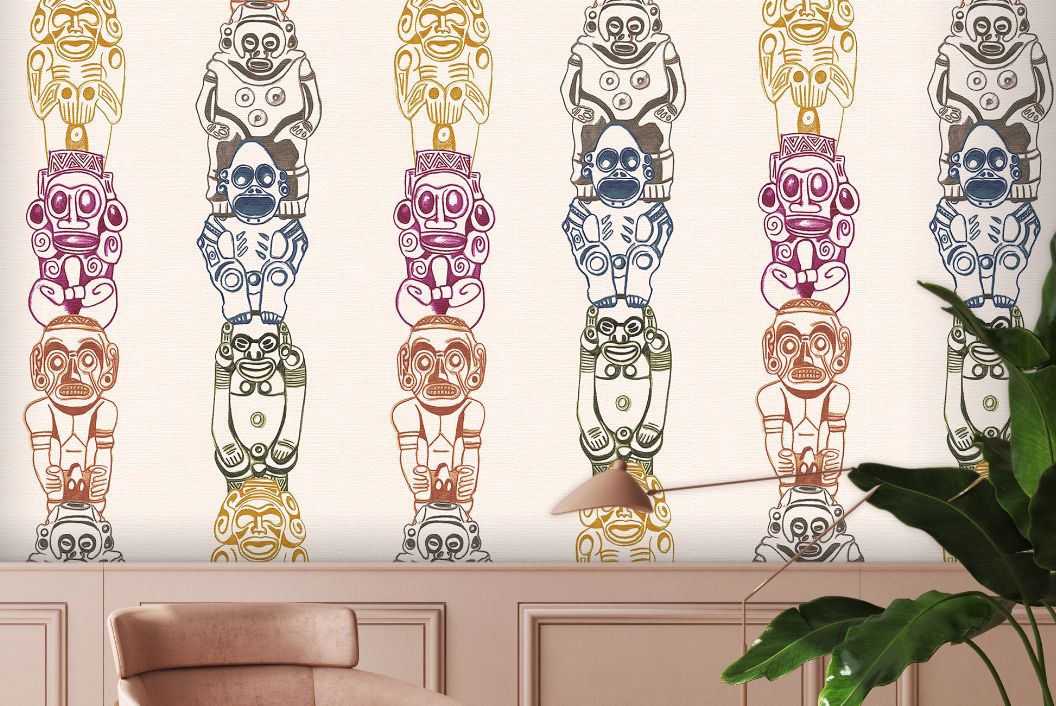
As you explore the World's End collection, take a moment for a closer look at our Taínos design. Based on zemis (stone idols) made by the indigenous people of the Caribbean and Florida, this sumptuous fabric has a story to tell.
Descended from Arawak Indian settlers, the flourishing Taíno culture of art, music and magical rituals was similar to Mayan civilisation in the 11th century. The zemis you see in our designs are considered among the best examples of New World sculpture, depicting supernatural deities and spirits in polished porous stone. But who were those deities and what do they represent?
The word zemi actually has a double meaning. It refers not only to the stone idols but to the gods themselves. For the Taíno, they were a variety of gods, goddesses, spirits, and ancestors: all worshipped for a specific purpose. Not much is known about the full range of deities, but there are a handful of Taíno gods we can get to know a little better.
Most importantly, there's Atabey (or Atabei), the mother goddess and creator. Atabey was so powerful, she gave birth to herself as well as the world, making her one of the most formidable creation gods in mythical studies. As well as symbolising fertility, Atabei was also the goddess of music and beauty. She's commonly depicted in frog-form, sitting in the traditional cross-legged birthing position favoured by Taíno midwives.
According to Taíno legend, Atabei made her two sons, Yucajú and Guacar, then set them to work helping her to fill the Earth with life. Yucajú was given the heavens to make, so he gathered jewels and gemstones from the darkest caves to create the sun, moon and stars. Next, he and his mother filled the Earth with lush trees and spirited birds and animals, eventually creating a cross between a jupía (part animal, part god), who became the first man: Locuo.
Yucajú was also the god of the sea, but instead of habiting the briny deep, the Taíno believed he lived in the sky, hidden among the stars he made so he could watch over them. He and the god of healing, Baibrama, also associated with cassava root, the most popular Taíno crop, so farmers would often bury effigies of him in their fields to bless them and bring a good harvest. Baibrama was responsible for curing villagers of cassava poisoning and his sons, Boinayel and Márohu, brought the rainy season to keep things growing and healthy.
Guacar, on the other hand, saw what his mother and brother were creating and became mad with jealousy. He transformed himself into the evil spirit, Juracán (or Hurricane) and with the help of his wife, Guabancex (goddess of storms) and his two sons (representing thunder and lightning) stirred up catastrophic stormy winds to destroy his family's creations. His raging tempests killed animals and destroyed Locuo's crops, but he could not undo the Earth. Locuo prayed to the gods to spare him so his family would be saved, and the first Caribbean hurricane myth was born.
For more unique illustrations from every corner of the globe, have a look at the World's End collection and our other blogs uncovering the stories behind the designs.

